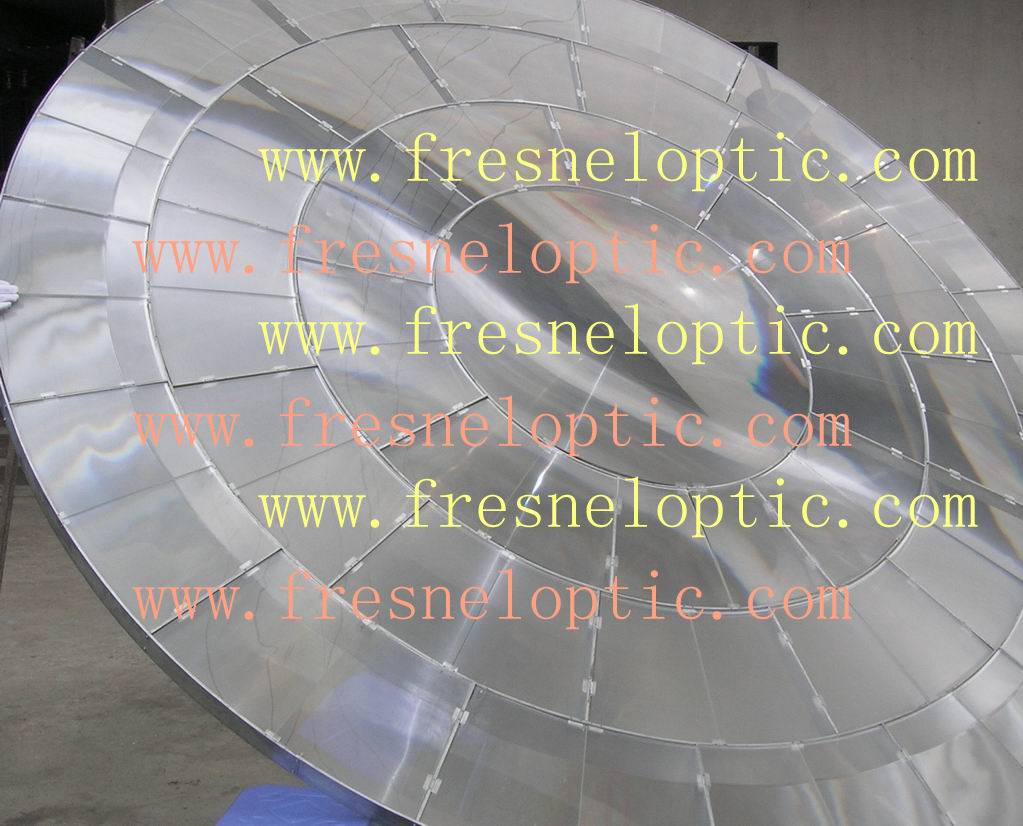
Help us get this lens
Japanese supplier http://www.ntkj.co.jp
Total Budget Summer 2012
| Pledges | Purpose | By |
| USD 85,- | Demo Fresnel Lenses | Charronfamilyconnect |
| USD 1000 | Big Fresnel lenses + shipping | |
| USD 500 | Structures and control system | |
| USD 2500 | Transport, travel and recording |
Today anybody can see that carbon resources have to be shared amongst more and stronger parties. At the same time most people are aware of the arrival of the ‘End of Cheap Oil’. Tar sands oil now makes up more than half of the US supply, it’s a type of fuel that can only be derived from the tar by burning a large part of it. The ‘carbon overhead’ of carbon is increasing. Because we are told money is the key to access anything we fail to see (in sufficient numbers) that money today is used to deny access to raw materials : Don’t create the money (absorb it using the immense ‘debt’) and you won’t have access. This in short means we are facing a raw material crunch, not a credit crunch, and the response to the crunch is delayed as long as we keep bickering over who owes what to whom and why. Money is a means of exchange, you need stuff to exchange, not money.
So in the near future there will be no carbon/oil/coal there may be gas, but considering the climate problem using that gas is suicidal behaviour. As there will be no oil there will be no mining or logistics. Maybe there will be in areas with large coal reserves, or if one makes oil out of coal (besides gas). But there will be little reason to waste it as we do today. How likely is the abundant consumer society if the main reason for it’s existence (cheap and potent liquid fuel) is removed?
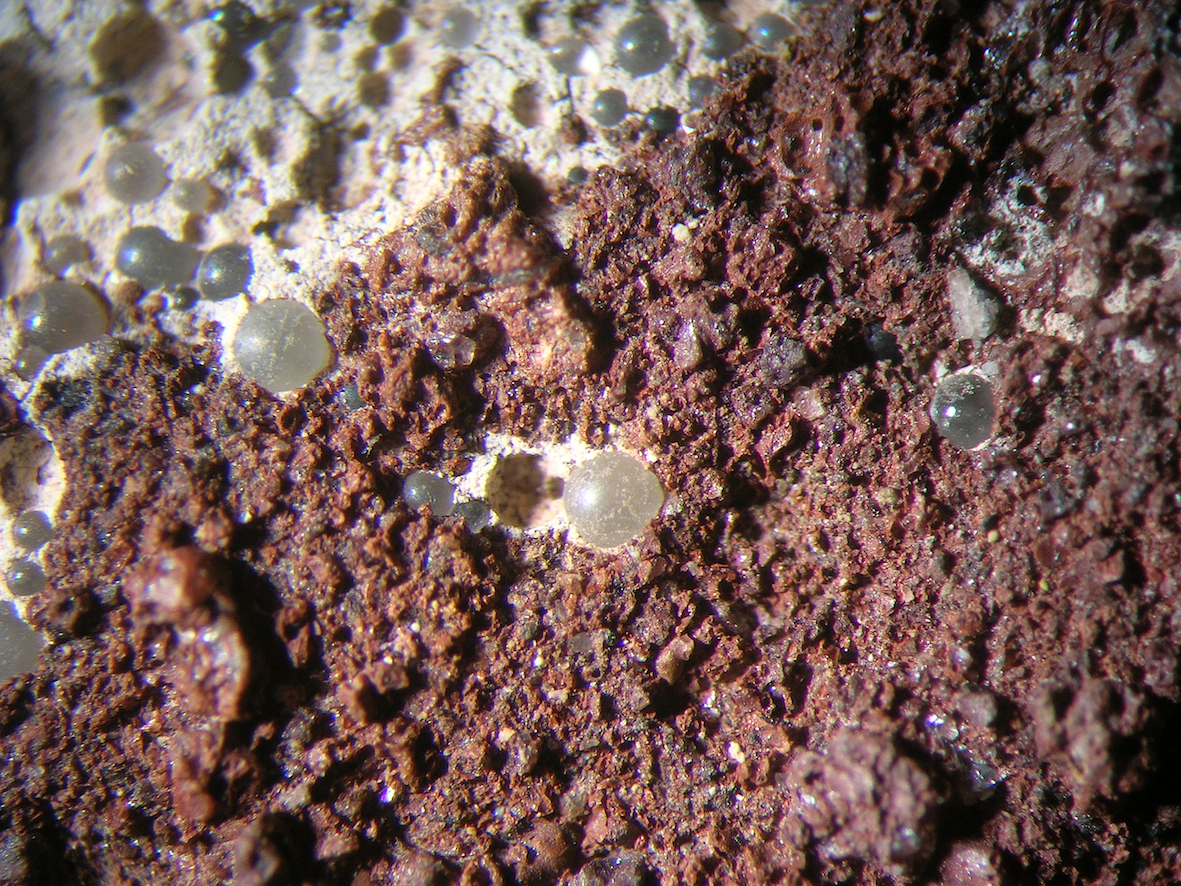
Glass beads at the site of a crater..
So here’s the quandry : How to build renewable installations, anything to counter the ecological degradation, anything to keep humans alive in a carbon depleted society? So many processes depend on carbon, coal, oil, gas because in every step the carbon industry saw an opportnity to replace labour with fuel expenses. Carbon dealers put a margin on everything. Now we need a way to construct and counter the damage on a massive scale. It can’t be done! Say some and look at nuclear, thorium or population reduction (Bill Gates).
The constraints are:
1. No mining (unless renewable powered)
2. No logistics (unless renewable powered)
3. No big machines (unless renewable powered)
4. No plastics, glues or other chemical products
5. Parts and repairs be made where they are used
6. Renewable power sources be made where they are used
The answer is simple : Glass

(Solar Sinter by Markus Kayser)
Glass
Glass is made of the first and second most abundant element on our planet, Oxygen (49%) and Silicon (29%) with additions to lower the melting point. Normal sand (SiO2) melts at about 2000 degrees Celcius, and adding Sodium and metals can lower this to 450 Celcius. Making glass out of sand sounds undoable, but it’s a simple matter of adding heat energy to achieve the result show above, sand melting. The image is made by Markus Kayser who went to Marocco and Egypt to demonstrate his Solar Sinter machine. It uses another thing found in abundance, ususally in the same place as sand : Sunlight. A simple 1 m squared fresnel lens can melt sand.
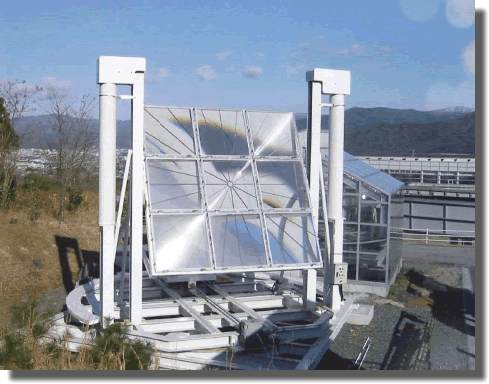
A fresnel lens, they are extremely cheap to make
We need to mention another instance of the use of solar energy with silicon, and that is in the purification of it to make solar grade silicon also discussed here. But glass made of sufficient thickness can keep a vacuum, and therefore be a very strong insulator. The amount of heat energy (with temperatures up to 300 degrees Celcius) that can be collected with glass vacuum collectors can be applied in many ways.
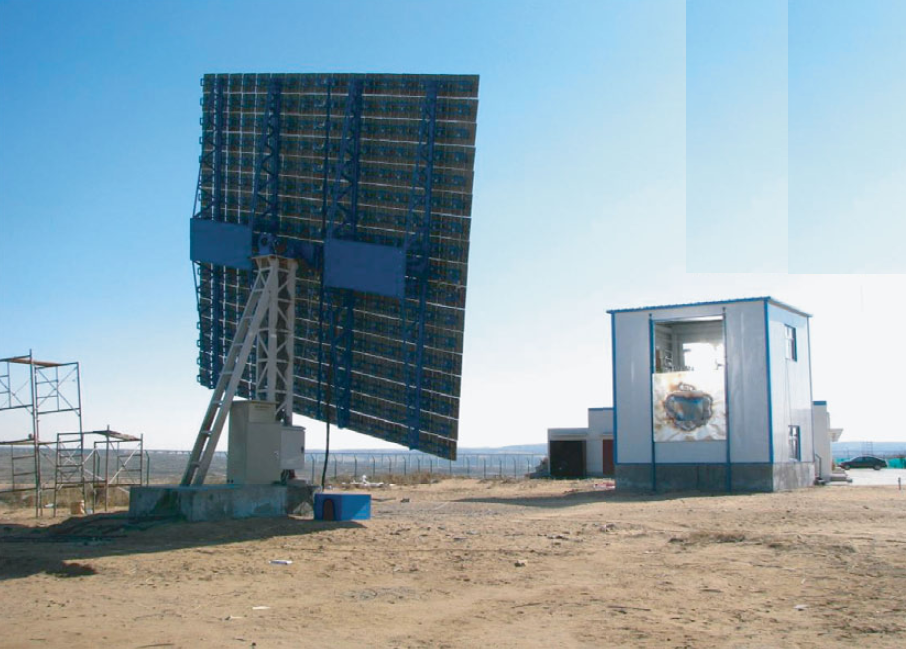
Solar silicon prurification. Good for a kilo of solar grade silicon a day..
Energy
We find the energy to melt sand into glass exactly where we find the sand : In our deserts. A rudimentary calculation (and probably off by a factor 10) tells us we need 1,3 to 5 MJ of energy to melt 1 kilo of sand. Melting sand requires high temperatures, which mean that head has to be added faster than it can be radiated from where it’s added. This means one usually needs elaborate oxygen pumped furnaces and high power fuel. But sunlight allows itself to be concentrated easily using the above type lense, and can make a spot as hot as 3500 Celcius. Melting sand with sunlight is easy.
Investment
Today investments are made based on their fee structure, especially as banks are in a terminal fight over the right to control our raw material flow, as explained above. Any technology that has no relationship with the main raw material : Carbon or any investment with no economical return (so no role in the current economical ecology) will be branded ‘risky’,’unproven’,’to expensive’, which is french for IT DOES NOT MAKE US RICHER! Natually an enterprise that sets out to work entirely outside carbon dependence will get no support. The only support it may get is support to promise and fail, like we see with CSP, which seems to be on the winning hand, but is still under the control of the enemy (Desertec). If we want to open up new frontiers in sustaining ourselves, we may have to do it without the carbon/credit system or confiscate the carbon for use despite vehement objections of the credit part!
The Building Blocks of The Glass Revolution
The question should be : If you only had sand and fresnel lenses and a minimum amount of other materials, how would you green the desert? Could you green the entire desert from the coast of Mauritania to Egypt? The answer is of course yes, The energy abundance means it’s only a matter of applying it and the entire desert can be made green, all equatorial deserts probably. But it requires understading the properties and possibilities of a new raw material : Glass.
Glass can be made to collect solar heat and turn it into steam. Glass steam engines are possible, glass steam turbines are even more possible, so are glass pneumatic drills and excavation. It would not be perfect, and it’s likely to have it’s drawbacks, but with nothing else around it may do the trick.
Greenhouses can be constructed entirely out of glass. Usually the supports are made of aluminium or concrete, but why not glass. Transparent glass needs certain minerals added, the ‘Desert Greenhouse’ concept, now hoarded by Goldman Sachs in Australia, means that provided there is water, either saline or fresh, any plant type can be grown, especially if it is done organically, and compost is used to nurish the soil, because then there is a cycle of hydrocarbons and minerals between what grows and the humans that live of that. Today that cycle has a huge imput of gas based fertilizer and other chemicals, which we dump in our rivers and oceans.
Glass can be used to lay irrigation pipes. Flexible silicone lined glassfiber tubes should be possible to make. This would mean irrigation systems would be developed with materials found on site.
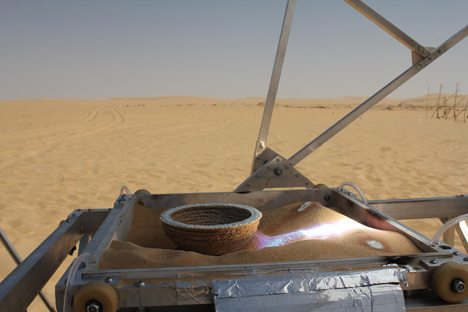
If you can make a pot, can you make a pipe? How about a heliostat foundation for Desertec ? (bron)
The effects of vegetation
If the desert is developed using solar energy, this does not mean it will always depend on human intervention in the growth of the life in it. Vegetation captures and recycles moisture in microclimates as is shown in the picture below. It’s in the middel of arrid Australia, a small patch of forrest keeps itself green, as it’s not for profit it can be assumed the financial inputs are modest if not non existent.

A forrest in the desert. The effect of vegetation in creating a microclimate that captures moisture, require little irrigation.
Channel lining slabs like the ones covering the inside of modern tunnels could be created. The use of salt water channels, especially to irrigate salt deserts, is a much easier way to bring water to deserts than to focus on desalination first. Wind patterns may carry large amounts of evaporated water to desert regions. Glass constructions can be used to maximize evaportation from shallow basins. The resulting cloud cover will also benefit life in arrid zones..
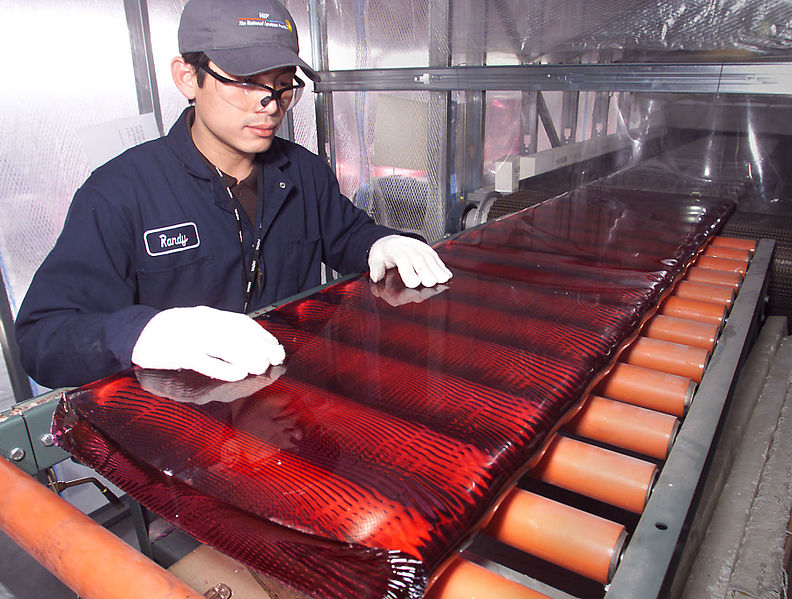
Which reminds us of the potential of solar pumped laser. The efficiency to work with solar glass material may be increased by the use of solar pumped lasers . These are lasers that take in solar photons which are converted into laser light that can cut through steel, and load up magnesium for use in batteries.
Glass Revolution
It is only a matter of time before we have to start looking at what we have to make things instead of relying on the usual complex logistics carbon/credit investment method of getting things done. The latter is dying. The potential of glass to green desert regions and rebuild our ecology, if not to simply sustain ourselves then to recapture carbon from our atmosphere and protect the rich biotic phase our planet is in right now almost suggests we should start a research center, aimed at churing out practical applications of direct solar glass, as a new source of wealth and life on Northern Africa. As said many times before, the renewable future is one with infinite resources and opportunities, without even having to economize on protecting and restoring our ecology. The only glass ceiling is a fantasy of our carbon/credit oppressors.
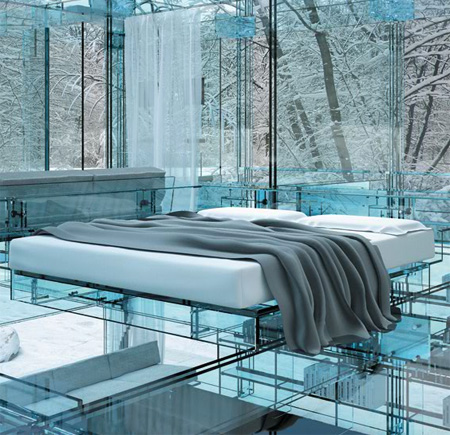
The future? (bron)